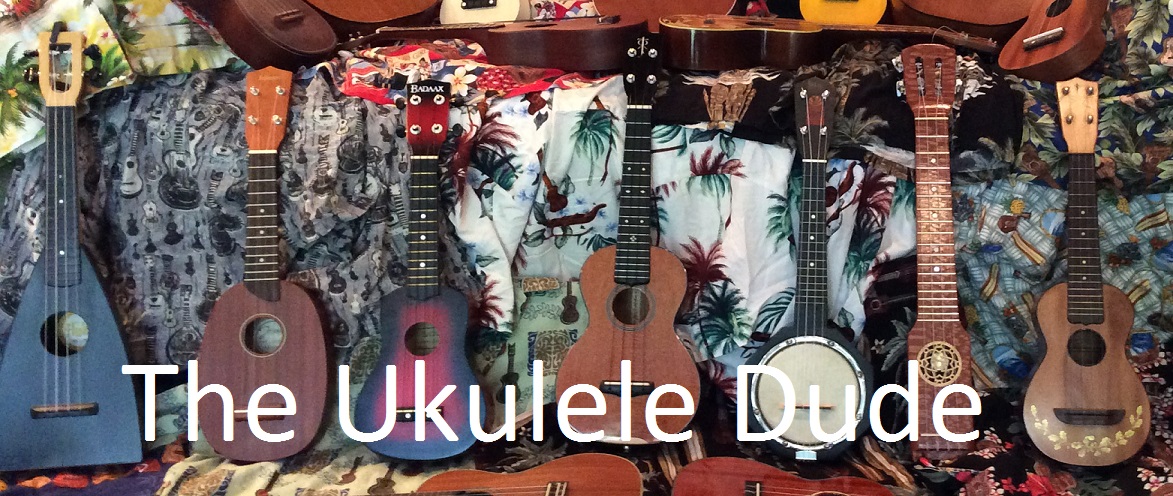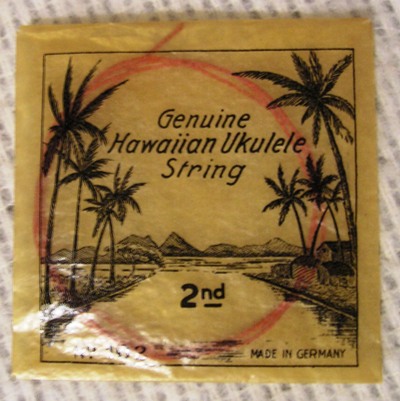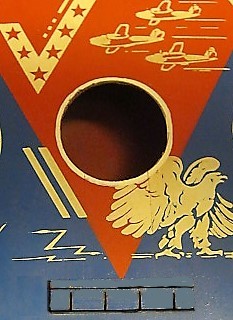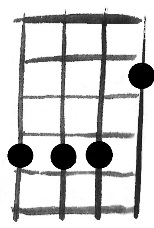Should I Put a Strap on My Ukulele? FAQ
To strap, or not to strap? That is the question! Whether ’tis nobler to suffer the slings and tie downs in outrageous colors, or to run free, perhaps to fall. Most professionals use a strap or leash when they are performing. The use of the device allows them to move their fingers up and down the fret board more quickly, without worrying about the possibility of the instrument falling. It is also more difficult to hold the ukulele securely when you are plugged in. The amp cord changes the weight of the instrument and pulls down on it. I prefer the use of a leash. It provides me some additional safety when playing and will prevent the instrument from crashing to the floor inadvertently. And it does not change the instrument with any holes or drilling. Jake Shimabakuro uses a leash. I got a chance to talk to him about…
What Are The Best Ukulele Strings to Use? FAQ
The answer to this question requires knowledge of too many factors and variables for a single answer to work for any two players. So rather than attempt to provide a single answer, I’ll give you a lot of the factors to consider with input from some more knowledgeable folks. What type of music do you play? What type of instrument do you have? What sort of sound do you want to get out of your instrument? In general, you can expect strings to have these basic parameters: Different types require different tensions, which along with the surface of the string, affect the feel to your fingers. The best way to determine what works for you is to experiment with different types and find the ones you like best on your instrument. A type of string you love on one instrument may very well sound muddy or soft on another. From…
Reading Chord Charts and TABs – FAQ
One of the common questions beginners have is on how to read a chord chart or TABs. I’ve put together a one page diagram that should answer most of the questions and help get a beginner get used to the correct nomenclature to use when they are asking more in depth questions. Feel free to download and share with others, I just ask that you leave the website and copyright info on the document. Showing up to an ukulele club meeting for the first time can be a bit daunting. You don’t know the people and you don’t know if you have the skill level to play with them. The biggest challenge is the possibility of getting confronted by a new and unexpected format for the music. Learning the Z Chord can be a big help! Clubs collect music from many sources and they all seem to create their own…
Can I Decorate My Ukulele? FAQs
This is a question that comes up on a regular basis on the forums and ukulele groups. People want to be artistic with their instruments and decorate them to show off their personal flair. Stickers, paint, ink, carving, etching and even wood burning are all methods people have asked about. The ukulele is a small acoustic instrument. The instruments are designed to provide the optimal tones and sounds for the scale, size, shape, and tuning. On high end instruments, the wood is carefully balanced, shaped, sanded, and braced to give it the distinctive tones that tell us “That’s an ukulele!” Anything you do to the instrument is going to affect that sound. How dramatic a change depends on the quality of the instrument. Your bright pink ukulele or the translucent green plastic uke you got for the beach are not going to be noticeably affected by putting a few stickers…
Should I Use a Pick to Play My Ukulele? FAQ
Like so many things, this is entirely up to you and how you play! So here are some things to consider when making your decision. When recording it can provide a sound that is picked up better by the recording system. For those with tender fingers or thin nails, due to arthritis or being young, it can be uncomfortable to play with the fingers. And it doesn’t have to be a pick, you can even use pretty much any stiff item, a piece of soft plastic, cardboard or an flat silicone eraser. One time we put a bunch of zip ties to use with a group of kids! I have one of those pick punches that can be used to punch picks out of old credit cards or gift cards. When I go to a class of beginners, I’ll have a bag full of small picks punched out of soft…
Can I Fly With My Ukulele? FAQs
Please note that the following article is specifically aimed at domestic travel within the United States. If you are crossing international borders, restrictions on certain types of wood and ivory can be cause major problems at customs. Make sure you are fully informed before taking your instrument through customs anywhere in the world! The safest way to travel with an ukulele is to carry it on as your personal item. I have never had any trouble going through security carrying an ukulele. The closest issue I had was when the screener asked what it was and if I could play it. I offered to, but he waved me on through with a grin. I have a bit of bungee chord that I use to wrap around my case, through the handle, and fasten it to my roller bag. My roller bag is one of the smaller types that will actually…
How Do I make an easy E Chord? FAQ
Over the years of being a member of ukulele groups and many online forums, there are a number of questions that continually come up. So I am creating a number of articles to address these FAQs. Like all advice, you have to take the responsibility and make the ultimate decision yourself. So here’s the first one! What is the easy way to make an E chord? There are many ways of making the E chord. A Major chord only requires 3 notes. To have an E chord you must have the E (duh!), G# and B notes. So you really only have to play three notes, the fourth string can be used to double up any one of those three notes, or not played at all. So there are many ways of playing the E chord, but most chord books will show you one of four ways. The most common…



